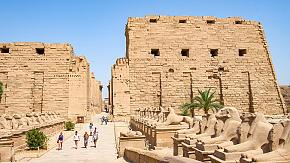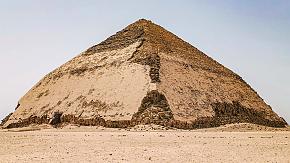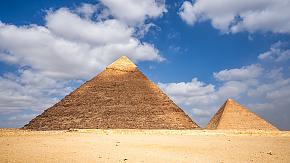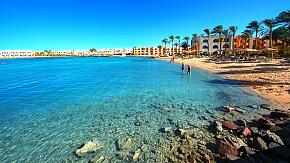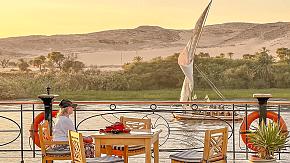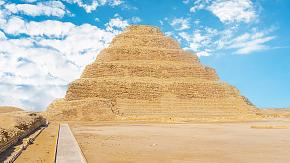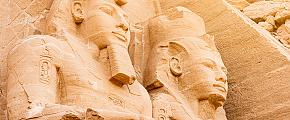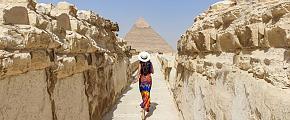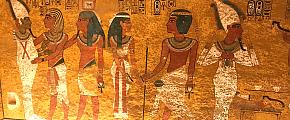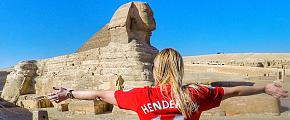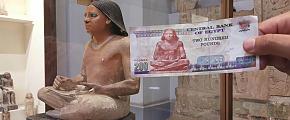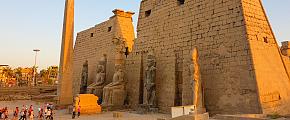Egyptian Gods and Goddesses: Why in Animal Forms & Where to See
From waking up with the sunrise to guiding souls into the afterlife, Egyptian gods and goddesses were like the ultimate life managers. And you can still "meet" them today: painted on tomb walls, carved into temple columns, or standing tall as statues. In this blog, we will discuss why these gods are often shown with animal heads, introduce you to the most famous ones, and show you where to spot their legacy in Egypt.
Why Many Egyptian Gods and Goddesses Have Animal Heads
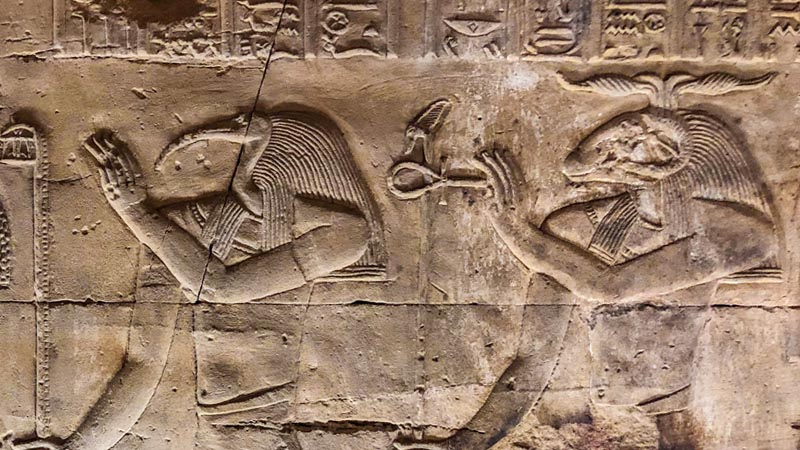 Egyptian Gods with Animal Heads: Thoth (Left) & Khnum (Right)
Egyptian Gods with Animal Heads: Thoth (Left) & Khnum (Right)
Have you ever wondered why so many Egyptian gods and goddesses look like people dressed up for an animal costume party? It's because animals were closely linked to life along the Nile River.
The ancient Egyptians believed animals had special powers. Crocodiles were fierce and could protect the water, cows gave food and strength, falcons soared high in the sky, and cats... Well, cats were just too cool not to be worshiped!
By giving gods animal heads, Egyptians mixed human smarts with animal superpowers. For example, when you see a falcon-headed god like Horus, think "super-vision protector."
So, in fact, it is a smart way to make the invisible powers of nature easier to understand.
Famous Egyptian Gods and Goddesses
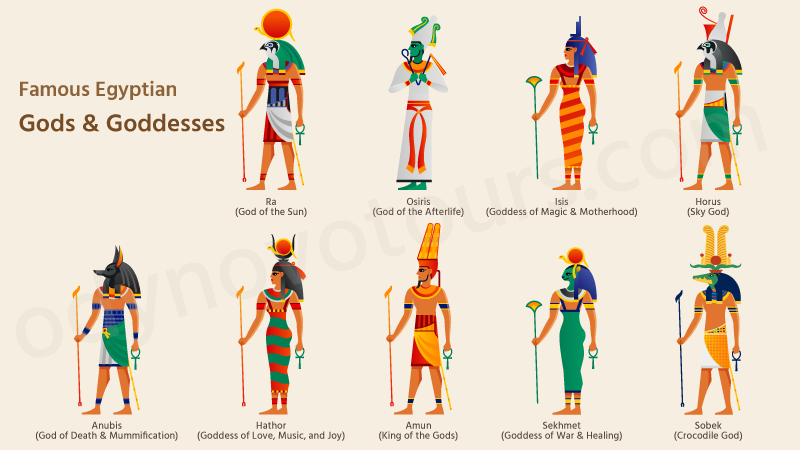 Famous Egyptian Gods and Goddesses
Famous Egyptian Gods and Goddesses
Ra (God of the Sun)
Ra often wore a falcon head with a glowing sun disk on top, showing his power soaring across the sky.
As the Sun God, Ra was basically the "CEO" controling the sky, the light, the weather, and the growth. Every sunrise was his clock-in time, and every sunset meant he was off duty, sailing through the underworld until morning. Without him, there would be no crops, no light, and no life in Egypt.
Where to see him today: You can find Ra in many temples and tombs. One of the best options is the Abu Simbel Temples. It was designed so that twice a year the morning sun shines directly on Ra's statue deep inside the sanctuary. (Abu Simbel Sun Festival)
Osiris (God of the Afterlife)
Think of Osiris as the king of the underworld, but in a good way. He wasn't scary but was all about rebirth and second chances. Egyptians believed that after death, Osiris judged your soul and (hopefully!) welcomed you into eternal life.
Osiris wasn't shown with an animal head but with green skin (symbolizing rebirth) and wrapped like a mummy, holding a crook and flail to show his power.
Where to see him today: Visit Abydos, especially the Temple of Seti I and the mysterious Osireion, both dedicated to Osiris. It is like walking through the doorway to ancient beliefs about life, death, and resurrection.
Isis (Goddess of Magic & Motherhood)
Isis was the wife of Osiris, and one legend says the Nile's annual floods were her tears for the death of him. Using her magic, she brought Osiris back to life. After that they have their son, Horus, one of Egypt's most important gods.
That's why Isis became known as ancient Egypt's ultimate multitasker: a healer, protector, magician, and supermom all rolled into one. People adored her for her power to cure illness, mend hearts, and bring hope.
Unlike many gods, Isis wasn't usually shown with an animal head. Instead, she sometimes appeared as a kite (a type of bird), flying above with wings spread wide to protect those she loved.
Where to see her today: Head to Aswan and visit the breathtaking Temple of Philae, an island sanctuary dedicated to Isis. With its detailed carvings and peaceful setting on the Nile, it feels as if her protective energy still flows in the air.
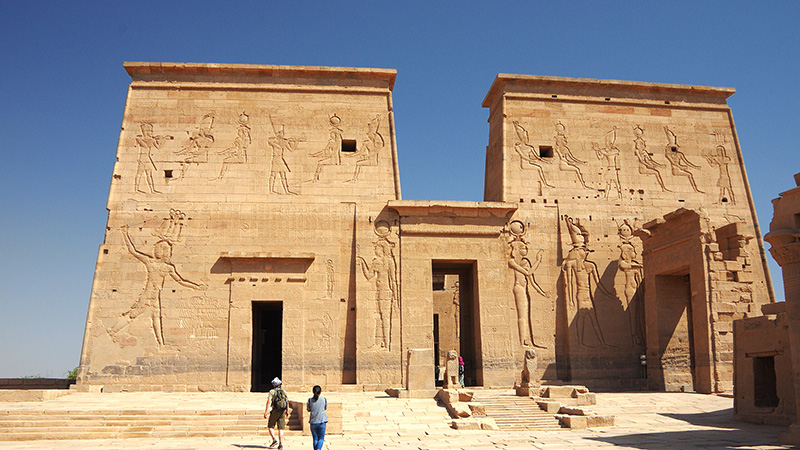 Temple of Philae
Temple of Philae
Horus (Sky God)
Horus, the god with a falcon's head and sharp eyes that miss nothing. He was the protector of Egypt and every pharaoh was said to be a "Living Horus." Horus once fought his uncle Seth, the god of chaos, to defend his father, Osiris. Spoiler: Horus won, which is why Egyptians saw him as the bringer of order and victory.
Where to see him today: The Temple of Edfu is Horus's home base. At the entrance, giant falcon statues of Horus stand guard, and the temple walls are filled with carvings of his epic battles.
Anubis (God of Death & Mummification)
Anubis is one of the most famous and easiest to recognize Egyptian gods. He has a jackal's head and a calm but serious vibe.
Why a jackal? Jackals used to wander near cemeteries. Egyptians thought they were spooky but powerful, so they turned that fear into respect and made Anubis the ultimate tomb protector. Ancient Egyptians believed Anubis guided souls safely into the afterlife and even weighed people’s hearts on a scale to decide if they were pure enough for eternity.
Where to see him today: In the Valley of the Kings, you will see Anubis painted on tomb walls, always standing guard.
Hathor (Goddess of Love, Music, and Joy)
Hathor was one of the most beloved goddesses in ancient Egypt as the goddess of love, music, dance, beauty, and joy. She was often shown with cow horns and a sun disk on her head, or sometimes even as a cow herself. People of ancient Egypt thought cows gave milk and life and it was a perfect symbol of Hathor's motherly kindness. She was also the goddess of beauty and makeup. Wearing eyeliner or offering a mirror was considered a way to honor her!
Where to see her today: Visit the Temple of Dendera, one of Egypt's most beautiful temples. Look up, you can see the colorful ceilings and carvings of Hathor's smiling face.
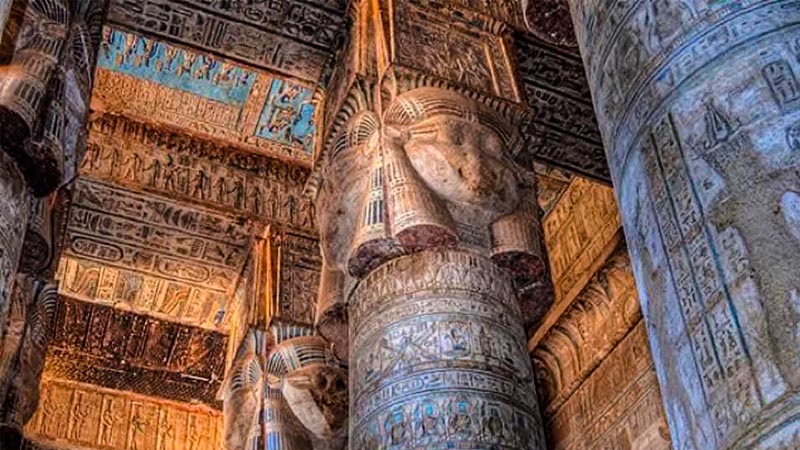 Dendera Temple
Dendera Temple
Amun (King of the Gods)
Amun started out as a local god in Thebes, but soon became so important that Egyptians called him the "King of the Gods." When joined with Ra, he became Amun-Ra, the most powerful deity of them all. People believed he was invisible, mysterious, and everywhere at once.
He's usually shown as a man wearing a tall crown with two big feathers sticking up. Not exactly animal-headed, but very easy to be recognized!
Where to see him today: The Karnak Temple in Luxor is Amun's main temple complex in Egypt. It is one of the largest heritage sites in the world, with towering columns and massive statues. Walking through it, you'll understand why Egyptians thought Amun was a god fit for kings.
Sekhmet (Goddess of War & Healing)
Sekhmet with the head of a lioness, was the goddess of war, battle, and fiery destruction. Ancient Egyptians believed she could unleash plagues on her enemies, but also cure disease when she wanted to. So, she was both terrifying and healing at the same time.
She was sometimes called the "Eye of Ra", sent out by the sun god to punish wrongdoers. But over time, her role softened. Now, she's more worshiped as a goddess of medicine and healing.
Where to see her today: In Karnak Temple, archaeologists have found dozens of Sekhmet statues, especially in Mut's precinct.
Sobek (Crocodile God)
If you are swimming in the Nile and saw a crocodile, you might want a god to protect you from it! That's where Sobek comes in. He's the crocodile-headed god of the Nile River, known for strength and protection. Don't swim in the Nile anyway, Sobek's eyes might not be on you.
Talk back to Sobek. People believed he controlled the waters and could both give life through the river and bring danger if angered. Some temples even kept live crocodiles as sacred animals to honor him.
Where to see him today: Visit the Kom Ombo Temple, dedicated to both Sobek and Horus. You will see carvings of Sobek with his crocodile head, plus crocodile mummies displayed in the Crocodile Museum nearby!
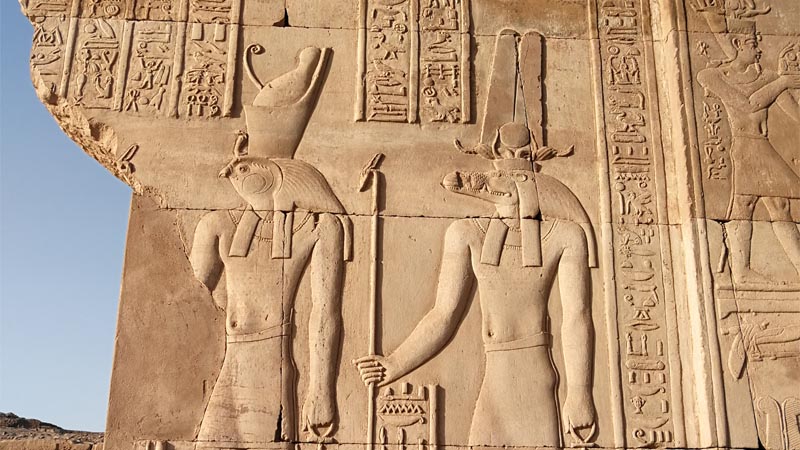 Horus & Sobek Carved on the Wall of Kom Ombo Temple
Horus & Sobek Carved on the Wall of Kom Ombo Temple
Sample Itinerary to See the Related Heritages
Now that you've met the most famous Egyptian gods and goddesses, here's a sample 10-day itinerary to follow. Then, you can take a trip to learn more about their stories.
| Day | Destination | Highlights |
| Day 1-3 | Cairo | Explore the Pyramids of Giza, the Great Sphinx, and the Egyptian Museum. |
| Day 4 | Aswan | Fly to Aswan. Visit Philae Temple (dedicated to Isis). Enjoy a felucca boat ride on the Nile at sunset. |
| Day 5 | Abu Simbel | Day-trip to the iconic Abu Simbel Temples of Ramses II and Nefertari, also you can find statues of Ra. Return to Aswan. |
| Day 6 | Kom Ombo & Edfu | Explore Kom Ombo Temple (dedicated to Sobek & Horus) and Edfu Temple (dedicated to Horus) along the way to Luxor. |
| Day 7 | Luxor (West Bank) | Visit the Valley of the Kings, Temple of Hatshepsut. |
| Day 8 | Dendera & Abydos | Day-trip to Dendera Temple (Hathor) and Abydos (Osiris). |
| Day 9 | Luxor (East Bank) | Explore the Karnak Temple Complex and Luxor Temple. |
| Day 10 | Cairo | Fly back to Cairo for departure. |
*Note: I gave this sample is mainly use private car as main transportation. This way you can have much more flexibility to stop or skip some sites as you like. If you want travel in a more relaxing style, you may choose a Nile cruise tour bwtween Aswan and Loxur. It can also cover those sites on the itinerary. For planning a personalized trip to Egypt, please feel free to contact Odynovo.
What Our Clients Say
Explore the latest verified reviews of Odynovo's travel services on Tripadvisor, Google, Trustpilot, Product Review and more trusted platforms.

